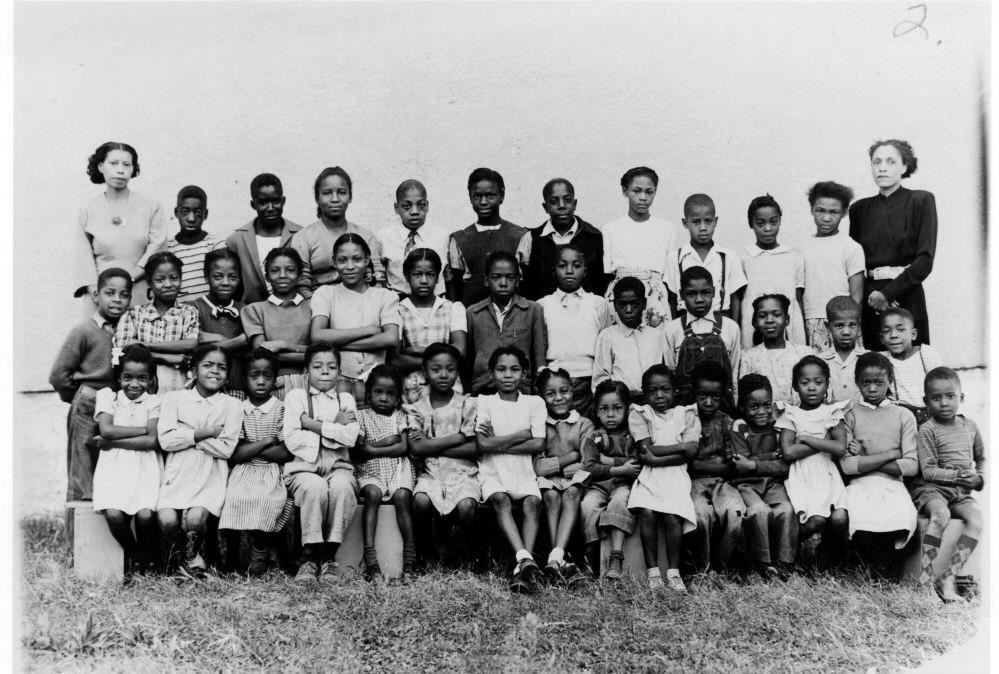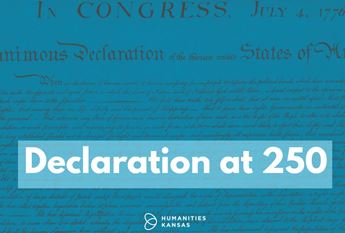

Before Brown: Madam C.J. Walker School and Desegregation
July 8, 2025
Before there was Brown v. Board, there was Webb v. School District No. 90. The Webb case set the stage for the Brown v. Board of Education case that resulted in the desegregation of schools nationwide. Now, researchers at MidAmerica Nazarene University are documenting the story of this little-recognized case with support from a Humanities for All grant.*
The story of Webb v. School District No. 90 begins in 1888, when a new one-room school opened serving both Black and white students in the small farming community of South Park, Kansas (now part of Merriam). In 1912, a new South Park Grade School was built. The white students left to attend the new school and the Black students remained at the 1888 school, which was renamed Madam C.J. Walker School in honor of the prominent Black businesswoman.
In 1947, the school district replaced the 1912 South Park Grade School with a new, modern school building – now called South Park Elementary School – for the white students. Black students continued to attend the original 1888 Walker School, which by that time was a two-room school and badly deteriorated. The school board refused to allow Black students to attend the new South Park Elementary School and the Walker school community quickly organized. Parents Alfonso and Mary Webb staged a walkout – the Walker School Walkout – and filed a lawsuit. To keep students learning amid the boycott, teachers held classes in their homes and at a local church. Webb v. School District No. 90 went all the way to the Kansas Supreme Court—and they won.
Merriam became the first community in Kansas with desegregated public schools as determined by law. Kansas law made it illegal to have segregated schools in communities with populations under 15,000; however, Black Kansans had been fighting unequal schooling for decades, according to historian and project consultant Donna Rae Pearson. “Fighting segregation was never a one-and-done effort,” Pearson said at an April event at the Merriam Plaza Library. “It was a process of spotting loopholes, shutting them down, and then pushing the conversation further until there was hardly any room left for segregation to happen.”
Today, the building that once housed the Walker School is now the Philadelphia Missionary Baptists Church. They are working to restore the building to the school’s appearance in 1905.
The research team out of MidAmerica Nazarene University has several goals, including to raise awareness of Walker School’s pivotal place in local history through a panel discussion that took place on April 23, 2025; to build an exhibition commemorating the school in the Philadelphia Missionary Baptist Church; and to capture the stories and memories of local community members in an oral history project, which will deepen our understanding of the community’s history and culture. The Humanities for All grant supports the oral history project that will live in the new museum.
According to project director Addison Lucchi, the aim of the project is to tell “the authentic stories of those connected to the school.”
“There is incredibly important history associated with the school, and a lot of that history is relatively unknown to the broader public.”
With the construction of a permanent museum exhibit, community members will have the opportunity to learn more about the pivotal role the Walker School played in desegregating schools across the United States.
*Humanities For All Grants are currently suspended due to federal funding cuts. Learn more.
Join the Movement of Ideas
- BRING an HK Speakers Bureau about the Brown v. Board of Education U.S. Supreme Court case to your community. Find topics here.
- VIEW the online exhibition “Hidden Stories: The Webb Family” on the Johnson County Museum website.
- WATCH a video about Corinthian Nutter and Esther Brown, two women who helped integrate South Park Elementary, produced by Flatland.



